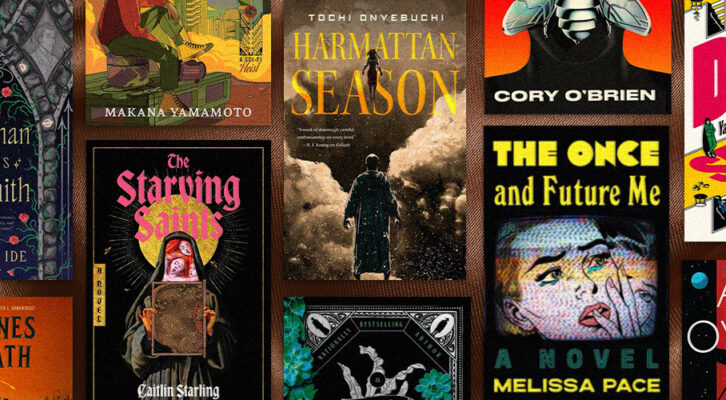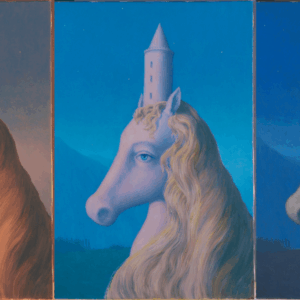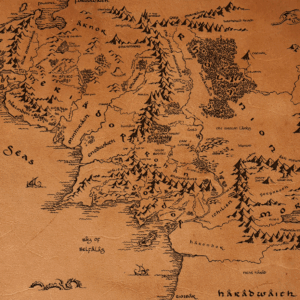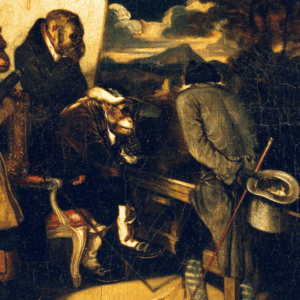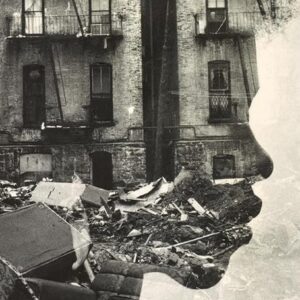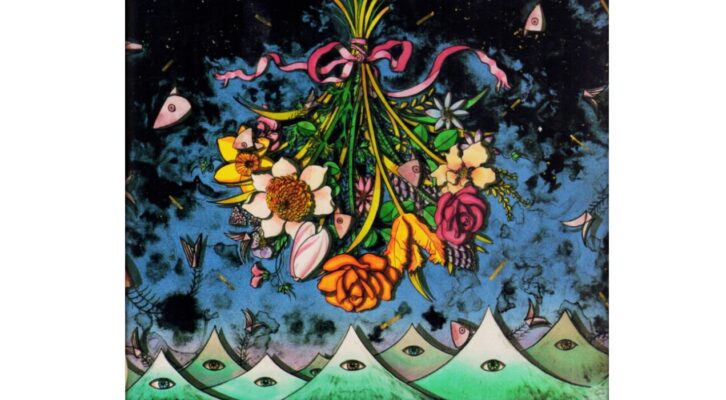
How to Teach a Controversial Novel of Racial and Sexual Violence in 2025
erin Khuê Ninh on the Reissue of Lois-Ann Yamanaka’s 1997 Novel “Blu’s Hanging”
Long after it had gone out of print, Lois-Ann Yamanaka’s Blu’s Hanging retained its place of honor as the last reading on my Introduction to Asian American Literature syllabus. I scrounged on for years with scant copies, teaching the text both for its controversial interethnic representational politics and its harrowing plait of sexual exploitation with economic vulnerability, of hurt with hunger.
Then, two female students came up to the podium after a first day’s lecture. They asked, with upset and indignation, why I had not given trigger warnings. This was when such warnings were first making their way into the classroom and it occurred to me, not gladly, that if these became industry standard, all my courses would need them.
In ethnic and feminist studies, understanding violence in its various forms and effects is core to the assignment. That is, confronting the very societal ugliness generally considered triggering is our content. My students’ affront felt as sensible to me as expecting anatomy classes to flag each splay of flesh. It is all splay of flesh. That is what we do here. You do your world no favors, I wanted to say to these young women of color, in taking exception to this as curriculum. Teaching social critique, it seemed, would now mean asking students to share the ethical responsibility to confront pain, while handing out discharge slips.
Not long after this complaint, I took Blu’s Hanging off the syllabus. Though I had published lesson plans extolling the rewards of this text, as equal parts object lesson and puzzle box, I deserted them in a mix of pique and fatigue. I would teach this book in all its howling difficulty, or I would not teach it at all.
Over the course of three days, my series of lectures had required us to: 1) examine the settler-colonial history of Hawai’i; 2) unpack the violence in the story such that, though graphic, it not be mistaken for gratuitous; and 3) enter into the national controversy that erupted around a Fiction Award, one that a niche academic association bestowed upon Yamanaka, and immediately rescinded. Mind you, the membership of the Association for Asian American Studies (AAAS) is maybe a thousand higher-ed faculty and graduate students from across the humanities and social sciences. (By comparison, the primary academic association in the United States for scholars of language and literature alone has a roster of over 20,000.)
Yet, in 1998, when a panel of lit scholars chose this novel for the AAAS book award and a contingent of the membership protested it, the tempest from this teapot spilled onto opinion pages such as The Atlantic and the New York Times. That the internecine fight went public was regrettable: spectators crowed for these race and gender studies nerds to go at each other, with the book taking arguably the greatest damage. Yet, that controversy also begot Blu’s Hanging, as inextricably as the chicken, the egg.
Faced with mounting charges of bigotry from within her readership, she could have opted to present a carefully shrink-wrapped story, with all the virtues and vices clearly labelled.
Yamanaka’s writing had met with acclaim and ire from the start. Her very first book, Saturday Night at the Pahala Theatre, received the Pushcart Prize, the Elliot Cades Award for Literature . . . and the 1994 poetry award from the AAAS. That is, her work struck consternation because the Association for Asian American Studies would come to honor it repeatedly—despite the Filipino men who loomed as bogeys/sexual predators in the Japanese Hawaiian imaginary she evoked.
Faced with mounting charges of bigotry from within her readership, she could have opted to present a carefully shrink-wrapped story, with all the virtues and vices clearly labelled, to prove she was taking notes. That, instead, she tripped the same wire of anti-Filipino stereotypes three books in a row? This seemed to me to stem not from carelessness or spite but obstinacy. Rather than surrender that risky content, she chose, in Blu’s Hanging, to write it harder. What do the predators in this world have in common, and who are its most vulnerable victims? Look again, she insisted, and figure it out.
I believe I understand something of this intransigence. Sure, all my syllabi now come emblazoned with “content warning,” in red block letters. All it took was a global pandemic. What it took was COVID-19’s way of rendering meaningless all precedent, of schooling us instead about capacity. In the place of expectation, we learned how precarious it was (is) that classes meet at all, how extraordinary that we read things and discuss them while in crisis. Under these conditions I found that students were not averse, actually, to grueling course content, but that, more than ever, if college were going to take up our time and energies, what we did there should heed the context and stakes for their lives.
Studying racial and sexual violence, suicidality and depression, self-harm and survival: nothing was beyond my students but they could use a less clinical pace, a more human scale. And this was not too much to ask. The pandemic taught me that the course I felt my students needed was in fact the same one where they knew that their feelings and wellbeing mattered. Without these conditions? I might never have figured out that issuing a signal for caution, an invitation to intention, need not mean the surrender of pedagogical rigor or academic freedom. I might not have come around to the advance notice as a small enough concession for continuing to confront difficult things together.
Those lessons make teaching Blu’s Hanging feel once again warranted, this novel that makes nothing easy. It sits us beside the Ogatas, siblings whose every confidence we hear but whom we are helpless to protect. “Love’s king-size bread works the best, white, for Maisie, Blu, and me.” Ivah’s voice, from word one, like mainlining vulnerability—only, patterned like a poet’s dream. Crucial messages embedded where our unreliable narrator just glimpses them, struggling against herself to see.
The novel’s disappearing from shelves under a cloud and then its reemergence for a new generation echoes the very origin story of Asian American literary history.
Through it all, Blu: surely as dear as flawed characters come, his abuse the more unbearable for it. “Dear Ivah,” he writes, and from that letter on we see and feel seen by him. It begins, “Merry Christmas and Happy Birthday. You might think I bought you the worst present ever in the whole wide world. But I really had think about it for long time.” It ends, “So here my Christmas present (Kotex) and birthday present (Modess) to you. Only had two kinds so wasn’t that hard. And I will buy for you again if you want me to.” The gift is also the letter itself—addressed to Ivah but meant for us—in the course of which a hurt gets healed which is somehow not hers alone. This is a novel unsparing in its love for us through Blu and Ivah and Maisie, even though, as Ivah recalls, “we never say it in this family.” Yamanaka strove to show rather than tell her detractors her noble intentions, and in so doing fell on her own stubborn sword, but still I believe her. “We just never say it in this family.”
With Kaya’s reissue, it will have been nearly 30 years since Blu’s Hanging’s original publication. The novel’s disappearing from shelves under a cloud and then its reemergence for a new generation echoes the very origin story of Asian American literary history. Books such as Carlos Bulosan’s America is in the Heart and John Okada’s No-No Boy—the former released to mainstream acclaim in the 1940s, the latter to none at all in 1957—had themselves been forcefully abandoned before the Combined Asian-American Resources Project recovered them in the 1970s and built around them a canon. That both texts are now so venerated, however, does not mean they do no harm.
Teaching either of these Asian American classics subjects students to intensely misogynistic imaginations about the alternately vile and angelic, domineering and servile qualities of women, accompanied by scenes of battery or sexual assault. To teach these fixtures of Asian American literature is thus to explain their political projects—a claiming of America that was an imperative then, if awkwardly nationalistic and settler colonialist now—while helping students also to hold the texts accountable. It is to navigate the ways the authors’ understandings of justice and community fall short, while also seeing them as part of a shared effort to envision a more just future.
The future that Blu’s Hanging envisions is not scaled to macro movements of history, or to the forms of resistance that usually fit ethnic studies criteria for political rigor. Instead, it dwells in a world where not all villainy is done by people conveniently ensconced in power. Indeed, some critics found Yamanaka’s depiction of the Ogatas as poor to be disingenuous because unrepresentative: Seeing as how only 3.8% of Japanese families in Hawai’i live in poverty, the suffering of a family like this, they implied, is statistically insignificant. But may that never be how literature works.
May we see this time, if we had not seen before, how ruthlessly the Ogata siblings are ostracized: their poverty made personal and pathologizing precisely because they are outliers in an affluent community which Yamanaka indicts as her own. May we see the fullness with which hard things are rendered—so that what is done to one boy significant only to two insignificant girls is made to matter—for the costly work such writing is. May we find the common cause in this feminist text even if it does its race work obliquely—at least as much as we have found in its literary forefathers, though they serve their misogyny straight up.
With this rerelease, may Blu’s Hanging be received into canon—where that is not a collection of perfect works, but a literary tradition indexing the evolution of Asian American art and scholarship, marked by holding ourselves to greater empathies and higher standards all the time. Reading by the light of Yamanaka’s work, let this novel of terrible beauty be an object lesson in how to tell what is worth saving.
__________________________

Blu’s Hanging, by Lois-Ann Yamanaka, is available now from Kaya Press.
erin Khuê Ninh
erin Khuê Ninh is a professor of Asian American Studies at the University of California, Santa Barbara. She is the author of Ingratitude: The Debt-Bound Daughter in Asian American Literature and Passing for Perfect: College Impostors and Other Model Minorities.











